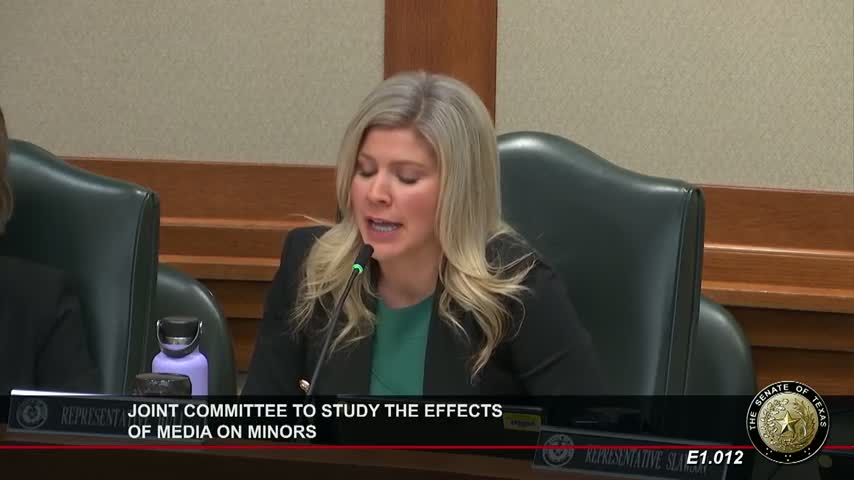Texas lawmakers discuss urgent need to protect children with IDD from online dangers
January 07, 2025 | Select, Interim, and Joint Committees, Senate, Legislative, Texas
This article was created by AI summarizing key points discussed. AI makes mistakes, so for full details and context, please refer to the video of the full meeting. Please report any errors so we can fix them. Report an error »

During a recent meeting of the Joint Committee to Study the Effects of Media on Minors in Texas, significant concerns were raised regarding the vulnerability of children with intellectual and developmental disabilities (IDD) to harmful media content. Parents and experts highlighted that these children are often more gullible and trusting, making them particularly susceptible to online dangers, especially when using school-issued devices.
One participant shared their personal experience growing up with an IDD, noting that while they did not encounter issues accessing inappropriate content, they recognized the potential risks for others. The discussion emphasized the need for enhanced protective measures to safeguard children with IDD from harmful online influences.
A critical point of discussion was the impact of animated content, including cartoons and anime, which can inadvertently expose children to explicit material. Experts warned that such content could lead to harmful behaviors and thoughts, with one case cited involving a young child who drew explicit images after being exposed to inappropriate anime. This raised alarms about the lack of regulation surrounding such media, particularly as technology evolves and AI-generated content becomes more prevalent.
The committee also explored the idea of banning cell phones in schools as a potential solution to reduce distractions and protect students from online threats. Some members expressed support for this measure, citing personal experiences where phone restrictions led to improved focus and learning outcomes. However, they acknowledged the need for thoughtful implementation, considering the necessity of communication for health-related reasons.
In addition to these discussions, the committee examined the broader implications of media exposure on mental health, referencing research that links social media use to rising rates of anxiety and depression among youth. Comparisons were made to other countries, such as the UK and Australia, which have implemented stricter regulations on media access for minors.
As the committee continues its work, the focus remains on developing actionable strategies to protect children from the potential harms of media, particularly those with heightened vulnerabilities. The outcomes of these discussions could lead to significant policy changes aimed at fostering a safer environment for all minors in Texas.
One participant shared their personal experience growing up with an IDD, noting that while they did not encounter issues accessing inappropriate content, they recognized the potential risks for others. The discussion emphasized the need for enhanced protective measures to safeguard children with IDD from harmful online influences.
A critical point of discussion was the impact of animated content, including cartoons and anime, which can inadvertently expose children to explicit material. Experts warned that such content could lead to harmful behaviors and thoughts, with one case cited involving a young child who drew explicit images after being exposed to inappropriate anime. This raised alarms about the lack of regulation surrounding such media, particularly as technology evolves and AI-generated content becomes more prevalent.
The committee also explored the idea of banning cell phones in schools as a potential solution to reduce distractions and protect students from online threats. Some members expressed support for this measure, citing personal experiences where phone restrictions led to improved focus and learning outcomes. However, they acknowledged the need for thoughtful implementation, considering the necessity of communication for health-related reasons.
In addition to these discussions, the committee examined the broader implications of media exposure on mental health, referencing research that links social media use to rising rates of anxiety and depression among youth. Comparisons were made to other countries, such as the UK and Australia, which have implemented stricter regulations on media access for minors.
As the committee continues its work, the focus remains on developing actionable strategies to protect children from the potential harms of media, particularly those with heightened vulnerabilities. The outcomes of these discussions could lead to significant policy changes aimed at fostering a safer environment for all minors in Texas.
View full meeting
This article is based on a recent meeting—watch the full video and explore the complete transcript for deeper insights into the discussion.
View full meeting
